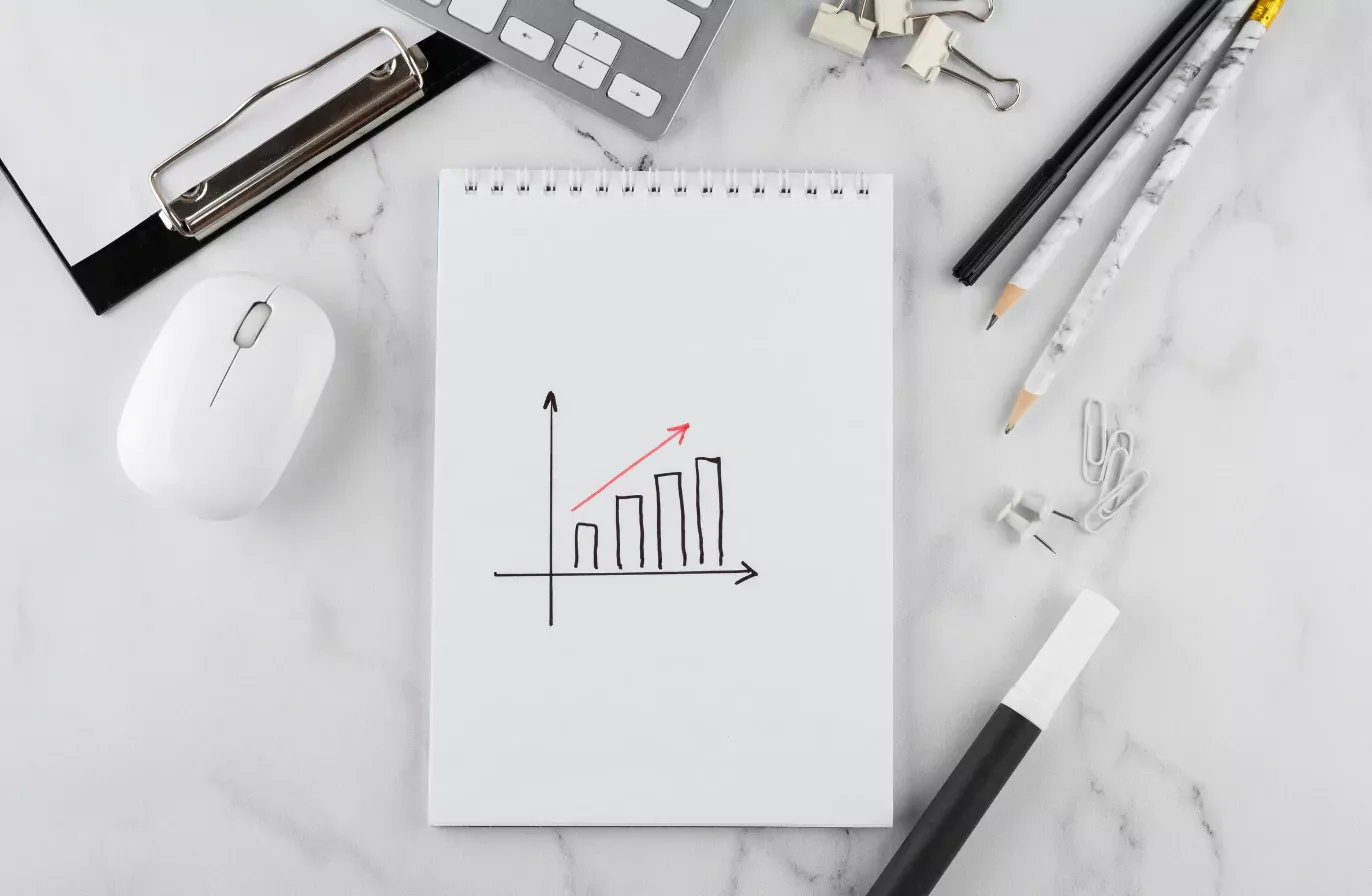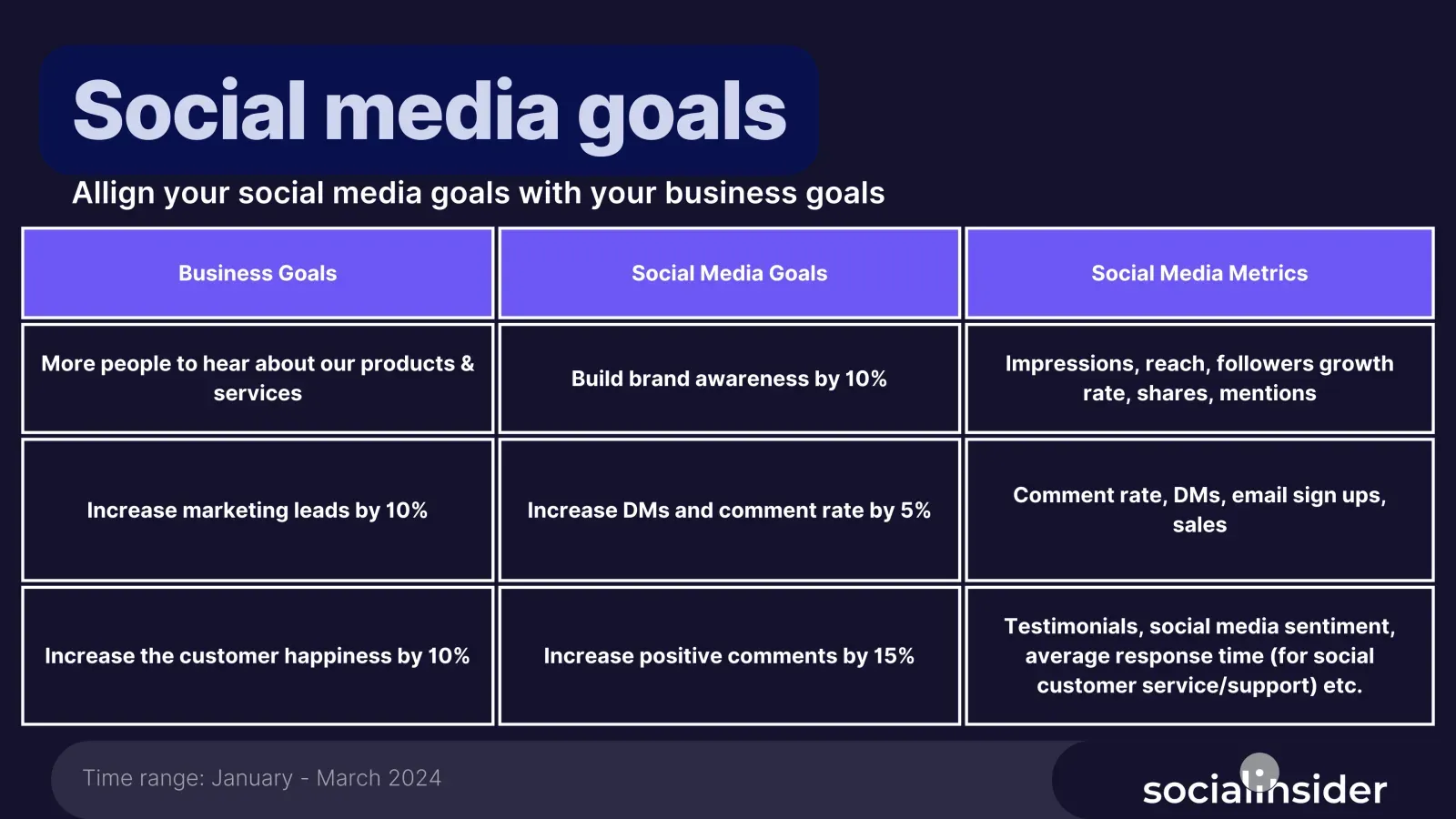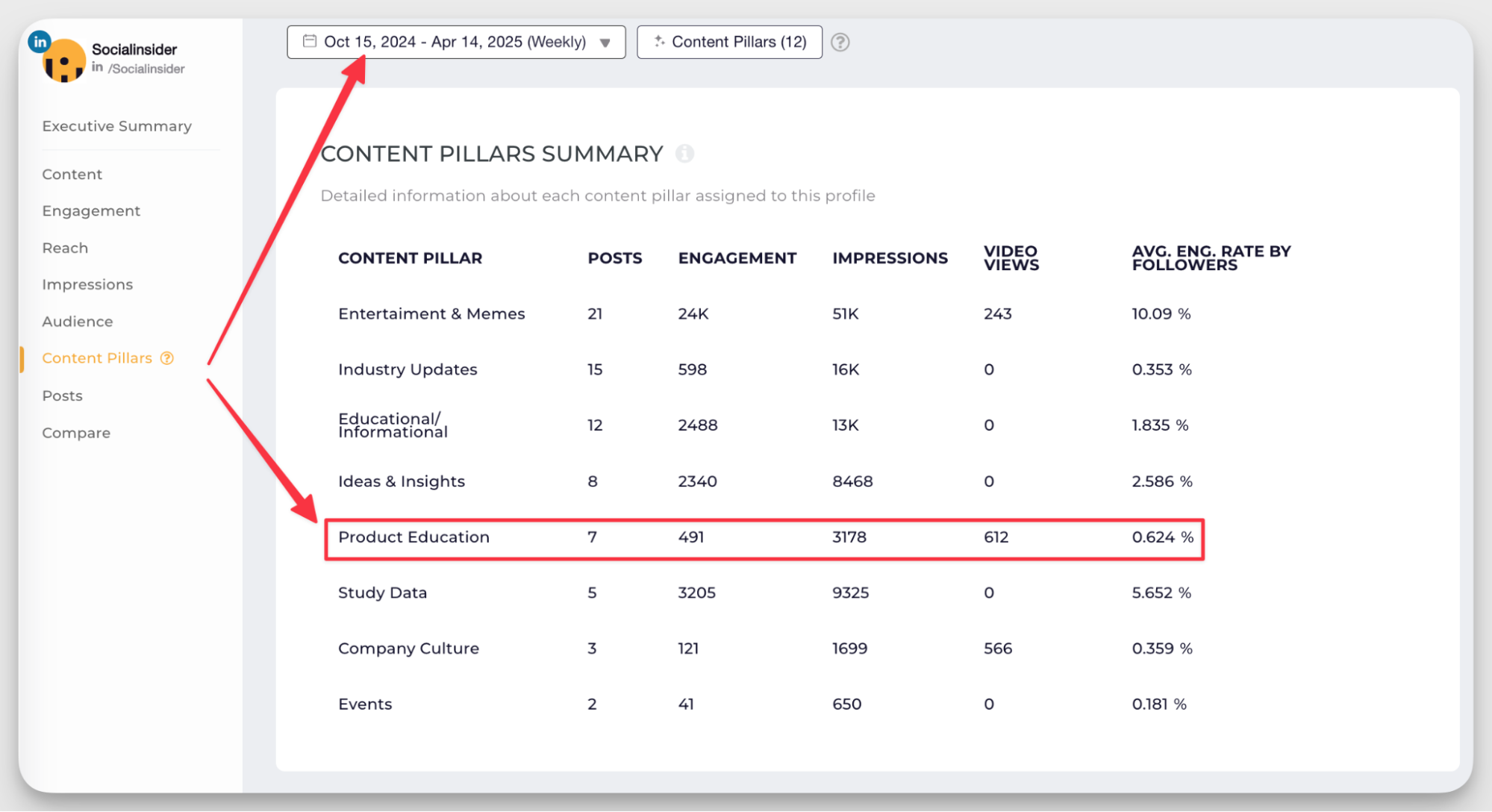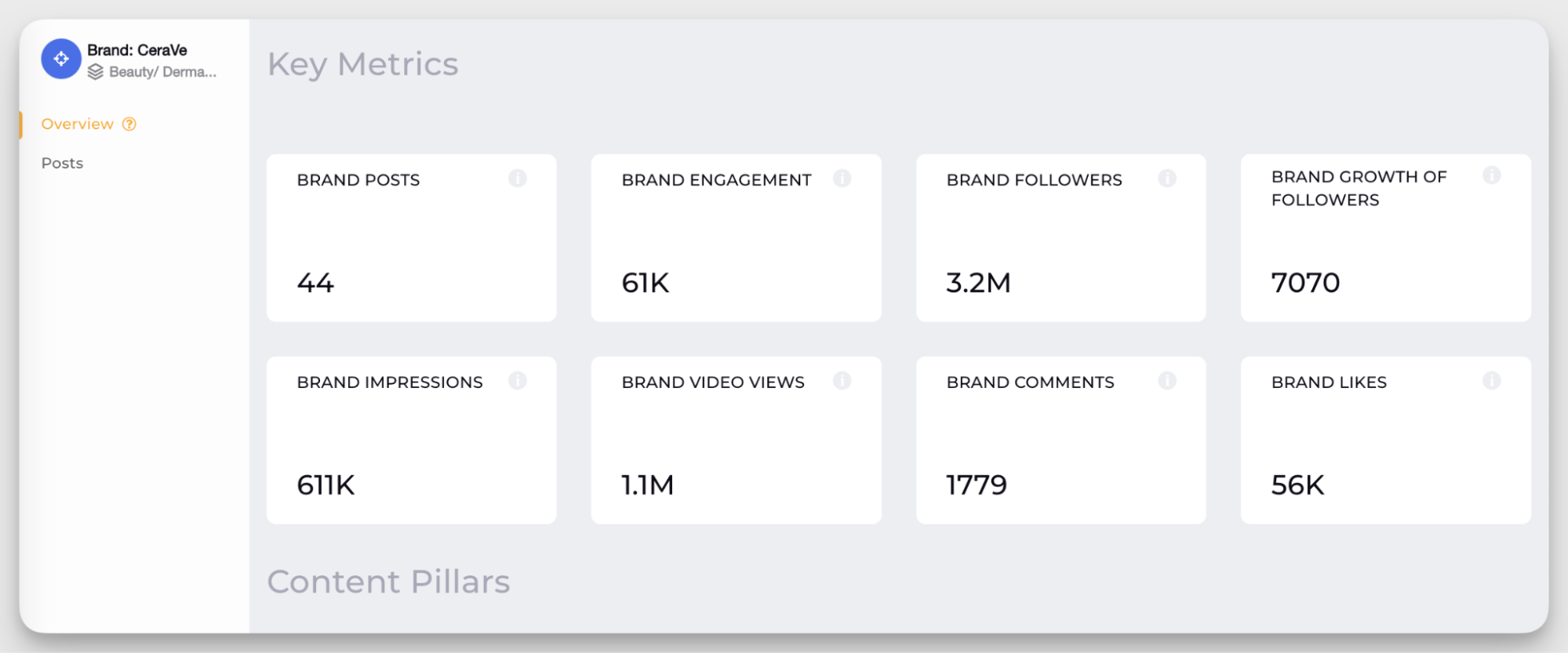Social Media ROI Explained: How to Track, Measure, and Maximize Your Returns
Learn how to calculate your social media ROI, together with some tools that will empower your reporting for better marketing.


Still finding social media ROI a bit tricky? You're not alone! With everyone, from your boss to eager clients, wanting to see the business impact of social media, knowing how to calculate and boost your return on investment isn't just a nice-to-have, but a must.
This guide will show you tested ways to measure what really counts and prove just how valuable your social media work is. Dig in.
Key takeawways
-
Define clear objectives: establish specific goals for your social media campaigns to effectively measure ROI.
-
Track relevant metrics: focus on metrics that align with your objectives, such as engagement rates, conversions, or customer acquisition costs.
-
Utilize analytics tools: leverage social media analytics platforms to gather data and gain insights into your performance.
Socialinsider -
Adjust strategies accordingly: use the insights gained to refine your social media strategies for better ROI.
What is social media ROI, and why does it matter for businesses?
Social media ROI (return on investment) represents the value your business gets back from the time, money, and resources you invest in social media marketing. It answers the question: "What business outcomes does my social media investment generate?".
In essence, social media ROI measures the effectiveness of your social media efforts in relation to your business objectives. This could be anything from revenue generation and lead acquisition to brand awareness and customer loyalty.
Here's why measuring social media ROI is important:
Justifies marketing spend
Every social media manager has heard this question more than once: "Why should I spend my resources on social media?". It comes up in planning and budget meetings, client pitches, and end-of-year wrap-ups. When you learn how to measure social media ROI, you get concrete answers by:
- Showing exactly how your social media activities contribute to revenue, conversions, or brand growth.
- Providing the numbers you need when leadership asks about social media's value.
- Giving you solid ground to stand on when requesting to maintain or increase your social budget.
Tracks progress toward different objectives
Measuring social media ROI helps you:
- Connect social media metrics to actual business outcomes like sales, leads, and website traffic
- See clear relationships between your social media activities and customer behaviors.
- Track improvement over time, not just in likes and shares, but in metrics that matter to your bottom line.
Provides strategy and budget optimization insights
When you track ROI on social media, you'll have data-backed answers to these questions:
- Which types of content drive the most valuable customer actions?
- Which platforms give you the biggest bang for your buck?
- Where should you focus your limited resources for maximum results?
- How do you plan content that not only engages but also converts?
Builds trust with stakeholders
General statements about the efficiency of Instagram Reels or TikTok won't cut it with your CMO or CEO. Position yourself as a skilled social media strategist by understanding exactly:
- How is social media contributing to our sales pipeline?
- Where are the most important customer conversations happening?
- Which campaigns deserve more investment?
Social media ROI measurement gives you the hard data to answer these questions confidently and build trust in your strategy.
How to calculate social media ROI
Figuring out how to measure ROI on social media starts with a clear process. Let's break it down (and we'll get to the formula, don't worry).
Step #1. Establish clear social media objectives tied to business goals
Your social media efforts should support broader business objectives such as:
- Brand awareness and recognition
- Direct sales and revenue generation
- Website traffic and social media engagement
- Lead generation and nurturing
- Customer satisfaction and loyalty
Each social campaign should have specific targets that connect to these business goals:
- Driving qualified traffic to your website
- Generating social media leads through forms and calls-to-action
- Increasing app installs or downloads
- Boosting engagement with specific audience segments
- Converting followers into email subscribers
When setting these objectives, we recommend using the SMART framework (Specific, Measurable, Achievable, Relevant, Time-bound) to create goals you can actually track and measure.
For example, instead of a vague goal like "increase Instagram engagement," a SMART objective would be: "Increase Instagram Reels watch completion rate by 30% in the next quarter by creating 6 product tutorial Reels per month, supporting our goal to educate customers about product features."
One mistake we see frequently is companies tracking completely different metrics than what they initially set out to achieve.
If your goal is lead generation, don't get distracted by a viral post that brought lots of engagement but few qualified leads. Stay focused on the metrics that connect directly to your stated objectives.

Step #2. Select the right metrics that matter for your business
When measuring social media ROI, choosing the right metrics makes all the difference. Many businesses fall into the trap of tracking vanity metrics that look impressive but don't connect to business outcomes.
Here's how to select metrics that will help you accurately measure the ROI of social media:
Metrics that track revenue attribution from social media
These metrics directly connect social media activities to your bottom line:
- Sales and revenue generated from social media traffic;
- Customer lifetime value of social media-acquired customers;
- Cost per acquisition from social campaigns;
- Closed deals influenced by social media;
- Cost per lead from social media efforts.
How to track: Use UTM parameters in your social media links and set up proper attribution in your analytics platform to track the customer journey from social media touchpoints to purchase.
Metrics that track social-driven conversions
These metrics help you understand how well your social media efforts convert followers into customers:
- Number of leads generated through social channels;
- Return on ad spend (ROAS) for paid social campaigns;
- Website traffic from social channels;
- Webinar registrations driven by social promotion.
How to track: Create dedicated landing pages for social media campaigns and use conversion tracking pixels from platforms like Facebook, LinkedIn, and X.
Metrics that track owned media value
These metrics help quantify the value of your organic and influencer-driven content:
- Earned media value from mentions and user-generated content;
- Influencer marketing cost per lead;
- Influencer marketing cost per action (purchase, sign-up, etc.).
How to track: Calculate the equivalent advertising cost you would have paid to achieve similar reach and engagement.
Metrics that track customer satisfaction from social media
Social media isn't just about acquisition, it's also about retention and satisfaction:
- Response time to customer requests on social media;
- Engagement rate on product/service content;
- Sentiment analysis of comments and mentions.
How to track: Analyze your social media content pillars.
- Categorize all content into distinct pillars (for example, industry updates, product education, company culture, etc.)
- Track engagement metrics for each pillar separately.
- Compare performance across pillars to identify what resonates most with your audience. Looking at the social media content pillars in the Socialinsider dashboard below, we can see how different content categories perform over time. This granular approach helps you determine which types of content drive the most value.

- Adjust your content strategy based on these insights and monitor performance changes.
Metrics that track organic social media value
Paid social isn't the only game in marketing town. Tracking organic performance helps you measure the ROI of your content creation efforts:
- Organic engagement values across platforms;
- Organic impressions reached;
- Organic reach percentage;
- Follower growth rate;
- Video views and watch time.
Socialinsider helps you easily see key organic metrics at a glance and drill down into each as needed.

Step #3. Track your social media progress
Once you've established your objectives and selected the right metrics, you need reliable methods to track your social media efforts and results.
Here are six proven approaches.
Conversion tracking with UTM parameters
UTM parameters are tags you add to your URLs that help identify where your traffic comes from. These tags feed information to your analytics tools, showing you exactly which social platforms, campaigns, and content drive results.
This tells you when someone converts from this link that they came from Instagram, through an organic post, as part of your spring sale campaign.
Social media platform analytics for cross-channel analysis
Each social channel provides native analytics that give you platform-specific insights:
- Meta Business Suite
- X Analytics
- LinkedIn Analytics
- TikTok Business Center
- Pinterest Analytics
The trick is combining these into a unified view of your performance across channels.
Top social media analytics tools provide dashboards that pull data from multiple platforms into one place, making it easier to evaluate your overall social media ROI.
Google Analytics social reporting techniques
Google Analytics 4 offers powerful social media reporting tools that can be found under Acquisition > Social:
- The Social Overview report shows conversion data and revenue directly attributed to social channels.
- The Conversions report breaks down which social networks drive the most value.
- The Network Referrals report shows which social platforms send the most traffic.
- The Landing Pages report reveals which content performs best with social visitors.
- The Assisted Conversions report shows when social media played a role in conversions, even if it wasn't the final touchpoint (addressing social media's tendency to assist rather than directly close conversions).
These reports help you connect the dots between social engagement and website actions that drive business value.
Customer journey attribution models
People rarely see one social post and immediately make a purchase. Attribution models help you understand how social media fits into the larger customer journey:
- First-touch attribution gives social media credit if it was the first interaction.
- Last-touch attribution credits the very last interaction prior to the conversion.
- Multi-touch models distribute credit across multiple interactions.
- Data-driven attribution uses AI to determine the real impact of each touchpoint.
For social media campaigns, we recommend a multi-touch attribution model that heavily weights the first and last touchpoints, while still accounting for interactions in between. This strategy acknowledges the role of social media in initial discovery and its contribution to final conversions.
Calculating earned media value
Earned media value (EMV) helps quantify the worth of organic social presence, user-generated content, mentions, and shares. It's particularly useful when direct revenue attribution isn't possible.
As social media expert Alex Khan explains, major beauty companies like L'Oreal use EMV to demonstrate ROI from influencer marketing campaigns to executives. This metric allows social media managers to justify their activities even when working with estimated values rather than direct revenue metrics.
For organic content where ROI is naturally more difficult to quantify, EMV serves as a valuable proxy. The approach is straightforward: estimate what you would have paid for equivalent reach and engagement through paid advertising.
It's worth noting that while EMV works well for organic content, paid social campaigns should be measured with direct revenue metrics whenever possible. This creates a complete picture of your social media value: direct ROI for paid efforts and EMV for organic activities.
Measuring cost savings from social customer service
Social media often reduces customer service costs by:
- Decreasing call center volume.
- Enabling one agent to help multiple customers simultaneously.
- Providing self-service through community support.
Calculate these savings by comparing the cost of handling an inquiry via traditional channels versus social media.
Step #4. Track your social media expenses
To calculate social media ROI accurately, you need to account for all costs involved. Here is a comprehensive list of possible costs to help you accurately calculate yours:
Human resource costs:
- Internal team hours spent on social media management;
- Content creation time;
- Community management and customer service;
- Strategy and planning hours;
- Training and professional development;
- Freelancer or agency fees.
Digital assets:
- Professional photography;
- Video production costs;
- Graphic design expenses;
- Stock image purchases;
- Audio licensing;
- Animation costs.
Paid advertising:
- Platform ad spend;
- Boosted posts;
- Sponsored content;
- Retargeting campaigns;
- Social PPC costs.
Influencer campaigns:
- Influencer payments or product costs;
- Campaign management expenses;
- Content rights fees;
- Performance bonuses;
- Tracking and analytics.
Social media tools:
- Social media management platforms (Hootsuite, Sprout Social, etc.)
- Social media analytics tools (Socialinsider, Buffer, Keyhole, etc.)
- Social listening services (Sprinklr, Meltwater, Brandwatch, etc.)
- Content creation tools (Canva, Grammarly, ChatGPT, etc.)
- Contest or promotion apps (SweepWidget, Woorise, ShortStack, etc.)
Other costs:
- Equipment purchases (cameras, lighting, microphones);
- Client communication costs.
Step #5. Use simple formulas to calculate social media ROI for different campaign types
While some may jump to the formula immediately, we place it as the last step in the process because, without proper tracking of both progress and expenses, even the best formula won't yield accurate results. You need good data to get meaningful ROI calculations.
That being said, the social media ROI formula is straightforward:
ROI = (Gain from Social Media - Cost of Social Media) / Cost of Social Media × 100%
ROI = ((Number of Leads × Lead Value) - Cost of Social Media) / Cost of Social Media × 100%
For brand awareness campaigns, you can choose to focus on impressions:
ROI = ((Impressions × CPM Value) - Cost of Social Media) / Cost of Social Media × 100%
The key is assigning appropriate values to non-monetary outcomes when calculating the return on investment of social media marketing.
Essential tools that make ROI measurement easier
Measuring your social media ROI doesn't have to feel like a huge task (seriously!). The right tools can make it way easier and give you much better insights.
Here's what you'll want to have on hand to measure social media ROI smoothly and efficiently.
Native social media analytics apps
Most social media platforms offer powerful analytics tools right out of the box:
- Meta Business Suite (for Facebook and Instagram) — Track engagement, reach, and demographic data while monitoring stories and ads performance all in one place.
- X Analytics — Measure performance, audience growth, and profile visits with detailed engagement metrics.
- LinkedIn Analytics — Get professional audience insights and detailed content performance metrics specifically designed for B2B marketing.
- Pinterest Analytics — Understand what content resonates with pinners and how it drives traffic to your site.
- TikTok for Business — Measure social media video performance, audience demographics, and follower growth.
These native tools provide the foundation for platform-specific ROI tracking without additional cost, though they come with limitations.
Most native analytics only retain data for a limited time period, offer restricted export capabilities, and don't allow for cross-platform comparison, which can hamper comprehensive ROI analysis.
Google Analytics
Google Analytics 4 remains the gold standard for tracking website behavior from social media traffic. Here's how to use it effectively:
- Set up custom segments for social media visitors.
- Create goals to track conversions from specific social channels.
- Use the Social report section to see which networks drive the most valuable traffic.
- Monitor user behavior flows to see how social visitors navigate your site.
UTM builders
As mentioned earlier, UTM parameters are essential for tracking exactly where your social traffic comes from. UTM builders make creating these tagged links simple:
- Google's Campaign URL Builder
- Hootsuite's UTM Generator
- Bitly's Campaign Management tools
These tools help you consistently apply UTM parameters for source, medium, campaign, content, and term, making your analytics more accurate.
Pixels & conversion APIs
To track user actions across devices and measure true ROI, you'll need:
- Meta Pixel — Tracks user actions from Facebook and Instagram to your website, allowing you to measure conversions and optimize social media campaigns.
- TikTok Pixel — Similar to Meta's pixel but for tracking TikTok-driven conversions.
- X Pixel — Measures website conversions originating from X.
- LinkedIn Insight Tag — Tracks conversions and provides audience insights for LinkedIn campaigns.
For more advanced tracking, server-side implementations like Meta's Conversion API can capture events even when client-side tracking is blocked.
Dedicated social media analytics platforms
Third-party tools like Socialinsider offer advantages that native analytics can't match:
- Cross-platform analytics in a single dashboard.
- Competitive benchmarking against industry standards.
- Historical data beyond platform limitations.
- Advanced content performance analysis.
- Automated reporting to share with stakeholders.
Socialinsider's content pillar analysis is super valuable for ROI because it clearly shows which content brings the most bang for your buck, helping you fine-tune your strategy.
Plus, its competitive intelligence analysis lets you easily compare your performance to industry standards for engagement and growth, giving you crucial context for your ROI.
Unlike limited native analytics, Socialinsider offers years of historical data to spot long-term trends affecting your ROI. See these features in action with a 14-day free trial.
Creating custom dashboards that tell the complete social media ROI story
For teams serious about measuring social media ROI, custom dashboards are important because they connect fragmented data sources to tell a unified story.
Custom dashboards let you:
- Combine data from multiple platforms in one view.
- Automate reporting to save time.
- Create executive-friendly visualizations.
- Focus on the metrics that matter most to your business.
- Track progress toward specific ROI goals.
Here are some of the most popular and useful tools:
- Tableau — Create interactive social media dashboards that combine data from multiple sources, allowing you to visualize complex relationships between social activities and business outcomes.
- Google Data Studio — Build free, shareable dashboards that connect to various data sources, including Google Analytics, spreadsheets, and more.
- Power BI — Microsoft's business intelligence tool offers powerful data modeling capabilities for social media ROI visualization.
Common mistakes when calculating social media ROI
Even seasoned marketers sometimes stumble when tracking social media ROI. Watch out for these common mistakes.
- Focusing on vanity metrics (too much): Getting distracted by likes, followers, and shares instead of metrics that connect to business outcomes can lead to false impressions of success and strategies that focus on the wrong goals.
- Inconsistent tracking implementation: Be warned: Improper setup of tracking codes, pixels, and UTM parameters creates data gaps and inaccuracies that make reliable ROI measurement impossible.
- Using incorrect engagement metrics: Different platforms calculate engagement differently. Evaluate platform-specific metrics within their native context.
- Misinterpreting estimated data: Be cautious with platform-estimated reach and impressions. These numbers can differ significantly from actual figures, thereby undermining the credibility of your social media analysis.
- Missing content performance analysis: Not analyzing which content pillars drive the most value leaves you guessing about what works. Proper categorization lets you see which content types generate the highest ROI.
- Ignoring qualitative data: Numbers tell only part of the story. Customer feedback, sentiment analysis, and community growth provide context for understanding your true social media impact.
- Not establishing a clear social media value framework: Without a consistent method to calculate earned media value or social media contribution, you'll struggle to demonstrate ROI to stakeholders.
- Not accounting for the customer lifecycle: Social media often influences customer retention and lifetime value, not just acquisition. Failing to measure these long-term effects understates your true ROI.
- Neglecting to segment data: Looking only at overall performance instead of breaking down ROI by platform, campaign, audience segment, or content type masks insights that could improve your social media strategy. For example, your Instagram ROI might be negative while LinkedIn drives exceptional returns, but aggregate data would show average performance across both.
- Overlooking the full cost calculation: Many marketers include only ad spend in their calculations, forgetting content creation costs, staff time, management tools, and agency fees, leading to inflated ROI numbers.
Final thoughts
Measuring social media ROI isn't just about showing its worth but about constantly making your strategy better. When you link what you do on social to actual business results, it turns social media from a cost center into a business enabler.
Having the right tools makes a huge difference here. Sure, you could use spreadsheets for simple stuff, but proper analytics platforms like Socialinsider give you the detailed info and insights you need to accurately measure your social media ROI.
Why not try it for free for 14 days? You can see how categorizing your content and looking at all your platforms together can show you the real value of your social media marketing.
Analyze your competitors in seconds
Track & analyze your competitors and get top social media metrics and more!
You might also like
Improve your social media strategy with Socialinsider!
Use in-depth data to measure your social accounts’ performance, analyze competitors, and gain insights to improve your strategy.





